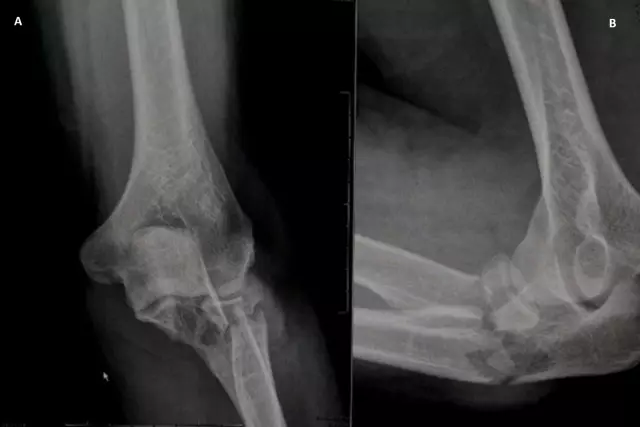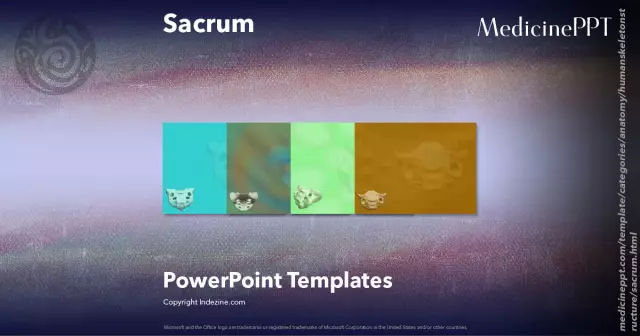- Author Rachel Wainwright [email protected].
- Public 2023-12-15 07:39.
- Last modified 2025-11-02 20:14.
Sacrum
The sacrum is a single bone formed by the five bodies of the sacral vertebrae fused together. Thanks to this fusion, the sacrum is able to carry heavy loads that fall on it due to the vertical position of the human body. It has the shape of a triangle, the base of which is facing upward and the top is facing downward. The base of the sacrum connects with the body of the last vertebra of the lumbar spine and forms a prominence (protrusion).

The pelvic (anterior) surface of the sacrum is smooth and concave. It shows four parallel transverse lines formed as a result of the fusion of the vertebral bodies. The posterior surface is convex and rough. It has five bony longitudinal ridges, which are the place of fusion of the articular, transverse and spinous processes of the sacral vertebrae.
Sacrum pain
Of all the pains in the spine, the most severe are the pain in the sacrum. In medicine, they are called sacrodynia. Sacral pain is more common in women. This is due to the fact that the bodies of female vertebrae are not as strong as those of men and, therefore, they tolerate physical activity much worse. In addition, significant stress falls on the sacrum of women during pregnancy and childbirth. The causes of pain in the sacrum can be:
- Traumatic injury;
- Anomalies of the development of the sacral spine;
- Thrombophlebitis of the pelvic and / or iliac veins;
- Osteochondrosis;
- Spondylolisthesis;
- Tumors;
- Infectious diseases;
- Expansion of the sigmoid colon;
- Metabolic disorders.
In addition, pain in the sacrum in women can occur during menstruation, with an incorrect position of the uterus and with a number of gynecological diseases. In men, sacral pain can be caused by chronic prostatitis or prostate adenoma.
Sacral pain: treatment
If painful sensations appear in the sacrum, you should consult a neurologist. If necessary, he will appoint consultations of related specialists: traumatologist, gynecologist, urologist.
Treatment of sacral pain should primarily be aimed at eliminating the cause that caused the appearance of this symptom. In addition, the appointment of anesthetic drugs, massage, manual therapy is shown. If necessary, your doctor may prescribe a range of physiotherapy treatments. Treatment of pain in the sacrum includes regular physical therapy for patients.
Sacrum fracture
A sacrum fracture usually occurs when falling on the buttocks or with a direct impact, and much less often when the pelvic bones are squeezed in the anteroposterior direction. The victims complain of pain in the sacrum. On examination, swelling is noticeable in the area of the injury. Severe fractures of the sacrum can be accompanied by profuse hemorrhage. In this case, the arising pain in the sacrum radiates to the lumbar spine and groin area.
If a sacral fracture is suspected, two-plane x-rays should be taken. If necessary, X-rays are taken in oblique and sagittal projections.
In the case of a sacrum fracture, treatment in most cases is conservative. Strict bed rest is prescribed (lying on the stomach) for a period of three to four weeks. Surgical treatment is performed for very limited indications (massive bleeding from damaged vessels, unstable fractures). During the operation, the bleeding is stopped (hemostasis), after which the osteosynthesis is carried out using special screws. The victims should not switch to the active mode until the fracture is completely healed, because Failure to comply with this condition can lead to the development of secondary neurological disorders.
After the abolition of bed rest, a gradual activation of the injured patient begins, physiotherapy and massage are prescribed. Physical therapy classes are shown.
Found a mistake in the text? Select it and press Ctrl + Enter.






